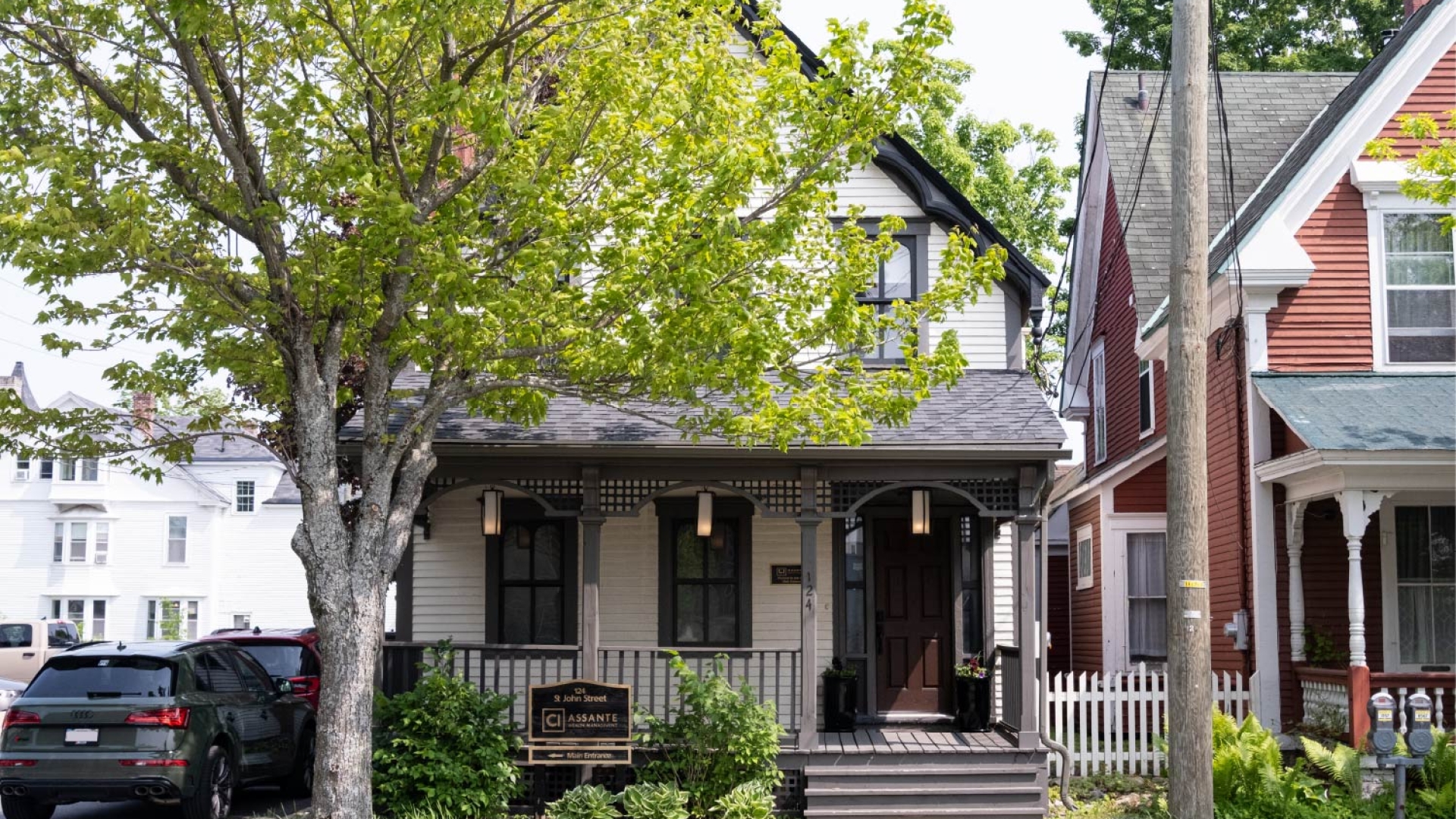Of 1860s construction, this 1 ½-storey wood frame dwelling stands as an example of the Carpenter Gothic Style. This dwelling is located on the east side of St. John Street between King and Brunswick Streets.
Heritage Value
The heritage value of this dwelling is associated not only with its architectural style, but with its ownership. Labourer Thomas Martin, the earliest known resident of this dwelling, resided here by the mid-1860s. Henry Alfred Braithwaite, who lived here during the 1880s, was one of the most renowned owners of this house. After a decade as a Land Surveyor, Mr. Braithwaite earned an international reputation as a Hunting Guide in the New Brunswick woods.
Henry Braithwaite, who would become known as “Uncle Henry” to some of the world’s most famous game hunters, was the first non-Native Hunting Guide in New Brunswick. When he was 13 years old, Braithwaite joined Lieutenant-Governor John Henry Thomas Manners-Sutton on a hunting trip led by Maliseet Hunting Guide, Gabe Acquin. Braithwaite was invited on the trip to perform chores at camp. Quickly proving his worth, Braithwaite joined subsequent hunting trips, eventually becoming a Hunting Guide in his own right.
After surrendering his position as Land Surveyor, Braithwaite became a fulltime Guide. He would not only be sought out by big game hunters, but he would be interviewed and profiled in Canadian and American publications and newspapers. Because of his superior guiding skills, Henry Braithwaite generated immense publicity for New Brunswick’s game hunting, advertising this province well beyond its borders.
Braithwaite was close friends with writer and poet, Charles G.D. Roberts. Roberts, who consulted Braithwaite for advice on animals, dedicated Red Fox (1905) to Henry Braithwaite.
Charles A. Sampson purchased what was then known as the Henry Braithwaite house in 1890. Originally employed in the Royal Gazette printing office, Sampson later joined Turner’s Express Company, managing the stage coach between Fredericton and Grand Falls. He would purchase the river express company, naming it Sampson & Cameron’s Express with a daily run to Saint John and Woodstock. After selling that business in 1867, Sampson opened a confectionery establishment in the city. However, Charles A. Sampson would be remembered for being the Secretary of the Board of School Trustees, a position he held for forty-four years, finally resigning in 1920.
The Johnston family next resided in this house, living here for more than three decades. During the 1960s, this dwelling was converted to accommodate government offices, and it housed a number of different departments over the next few decades.
Character-Defining Elements
The character-defining elements associated with this building located at 124 St. John Street include:
-
1 ½-storey wood frame construction
-
Carpenter Gothic Style elements
-
Medium pitched gable roof with bargeboard trim
-
Finial at gable peak
-
Large, rectangular windows
-
Open front verandah


